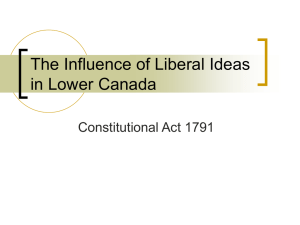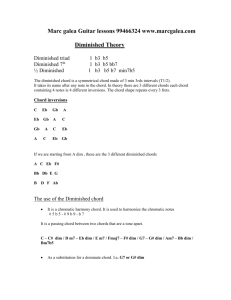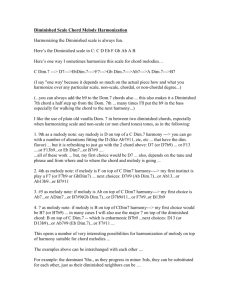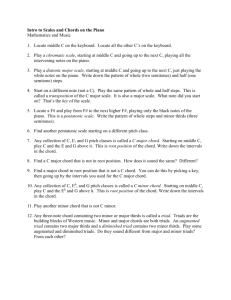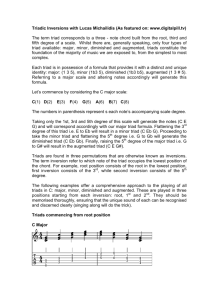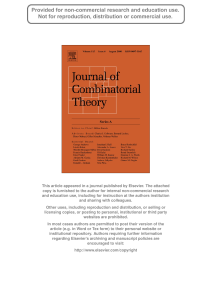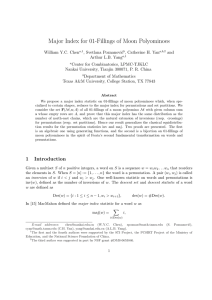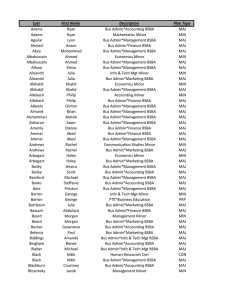File
advertisement
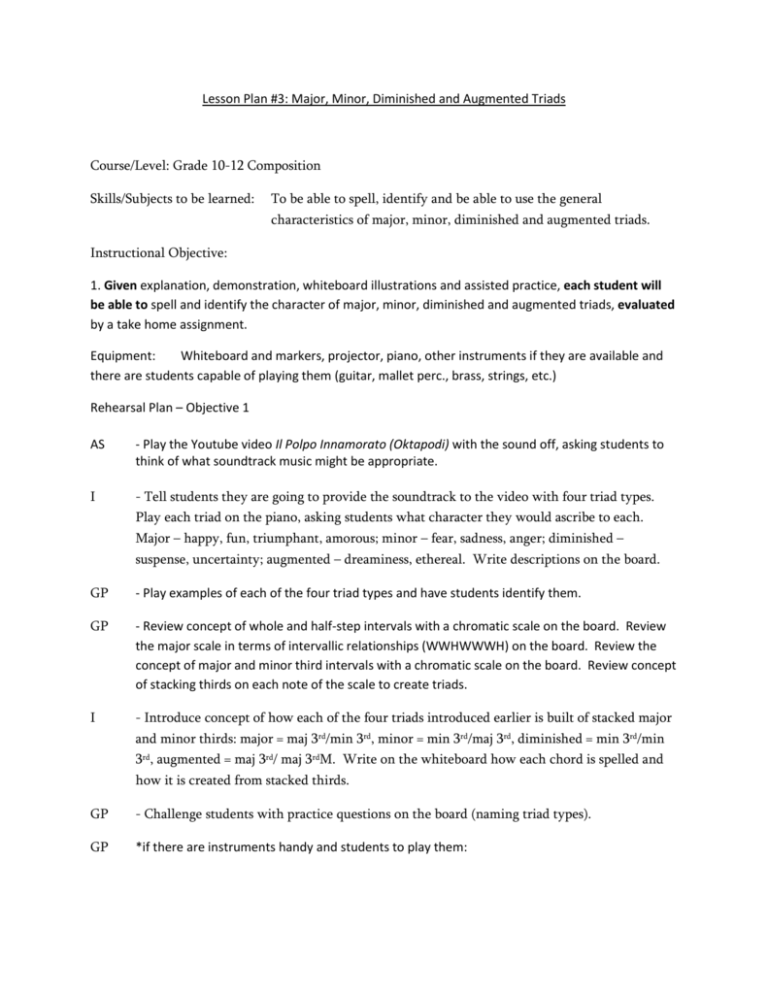
Lesson Plan #3: Major, Minor, Diminished and Augmented Triads Course/Level: Grade 10-12 Composition Skills/Subjects to be learned: To be able to spell, identify and be able to use the general characteristics of major, minor, diminished and augmented triads. Instructional Objective: 1. Given explanation, demonstration, whiteboard illustrations and assisted practice, each student will be able to spell and identify the character of major, minor, diminished and augmented triads, evaluated by a take home assignment. Equipment: Whiteboard and markers, projector, piano, other instruments if they are available and there are students capable of playing them (guitar, mallet perc., brass, strings, etc.) Rehearsal Plan – Objective 1 AS - Play the Youtube video Il Polpo Innamorato (Oktapodi) with the sound off, asking students to think of what soundtrack music might be appropriate. I - Tell students they are going to provide the soundtrack to the video with four triad types. Play each triad on the piano, asking students what character they would ascribe to each. Major – happy, fun, triumphant, amorous; minor – fear, sadness, anger; diminished – suspense, uncertainty; augmented – dreaminess, ethereal. Write descriptions on the board. GP - Play examples of each of the four triad types and have students identify them. GP - Review concept of whole and half-step intervals with a chromatic scale on the board. Review the major scale in terms of intervallic relationships (WWHWWWH) on the board. Review the concept of major and minor third intervals with a chromatic scale on the board. Review concept of stacking thirds on each note of the scale to create triads. I - Introduce concept of how each of the four triads introduced earlier is built of stacked major and minor thirds: major = maj 3rd/min 3rd, minor = min 3rd/maj 3rd, diminished = min 3rd/min 3rd, augmented = maj 3rd/ maj 3rdM. Write on the whiteboard how each chord is spelled and how it is created from stacked thirds. GP - Challenge students with practice questions on the board (naming triad types). GP *if there are instruments handy and students to play them: - Assign students with their instruments to each of the four chords, providing minimal direction as to which notes should be played (as long as it’s something belonging to their specific chord). Have remaining students “direct”, using hand signs to direct which chord should happen at any given point during the video (major – thumbs up, minor – thumbs down, diminished – X in the air, augmented – open questioning hands). Practice signing out chord name and having students respond quickly (as the character changes in the video happen quickly). *if only a piano or guitar is available: - The same as above except all students are “directors” and the teacher performs the chords on piano or guitar. GP - Have the students (or teacher as necessary) improvise the soundtrack with the video, directors signing chord directions. C - Point out to students that they were able to support what was happening in the video with these four chord types, and that they could listen for these chord types in any movie they watch (or music they listen to for that matter) and have a better understanding of why the chords are there and how they work. A - A worksheet assignment attached marked out of 20 (see below). Aid for Teacher – a target for what the “student directors” could come up with. Soundtrack Sequence 0:04 title aug 1:13 the plan maj 0:08 love maj 1:16 awakening dim 0:16 kidnapped dim 1:26 escape maj 0:29 nightmare chaos! 1:37 capture dim 0:32 horror dim 1:50 fight back maj 0:41 pursuit min 1:52 inevitable dim 0:46 danger dim 1:56 water 0:52 surprise chaos! 1:58 crash maj 0:53 fight min 2:00 together maj 0:58 crazy driving dim 2:03 bird attack dim 1:01 wipers maj 2:06 determination min 1:04 e-brake dim 2:12 credits 1:08 crash aug maj
